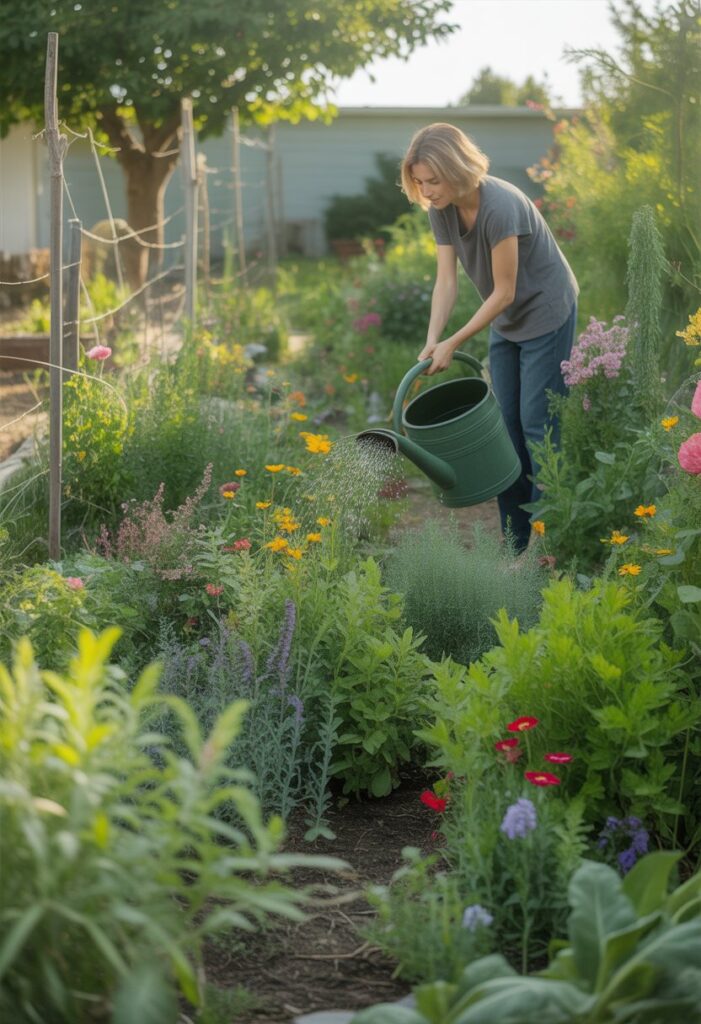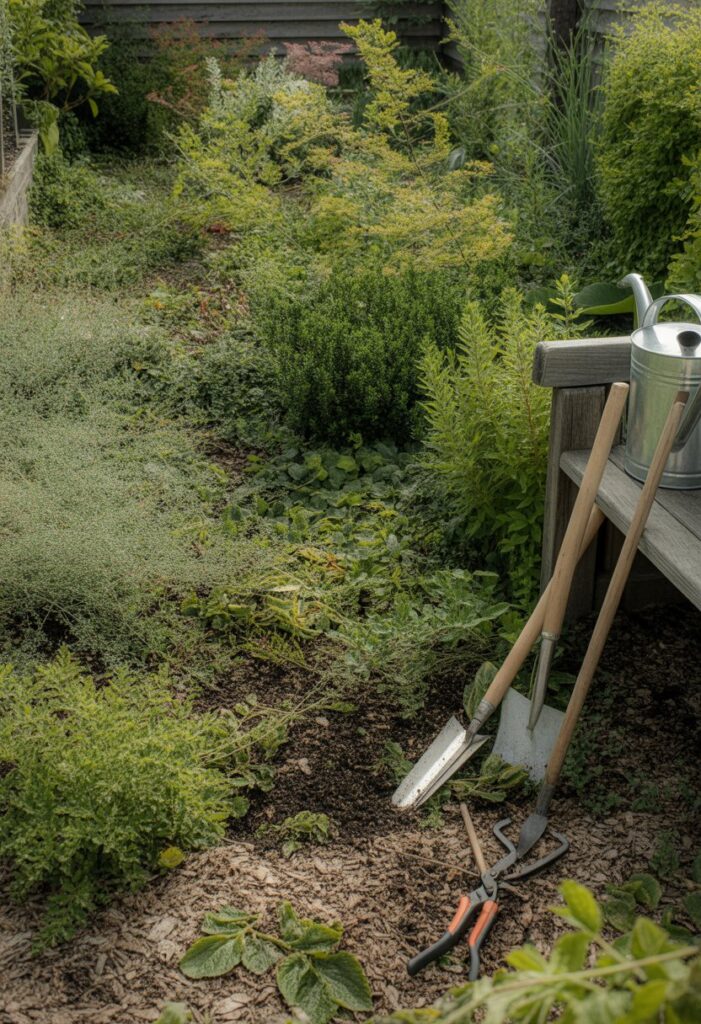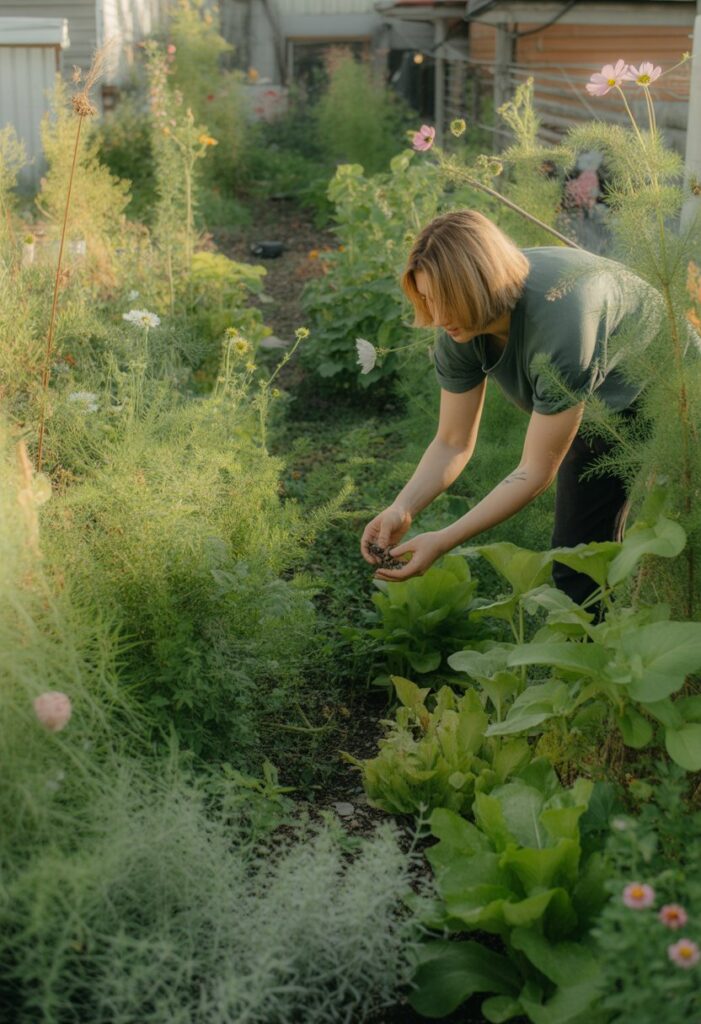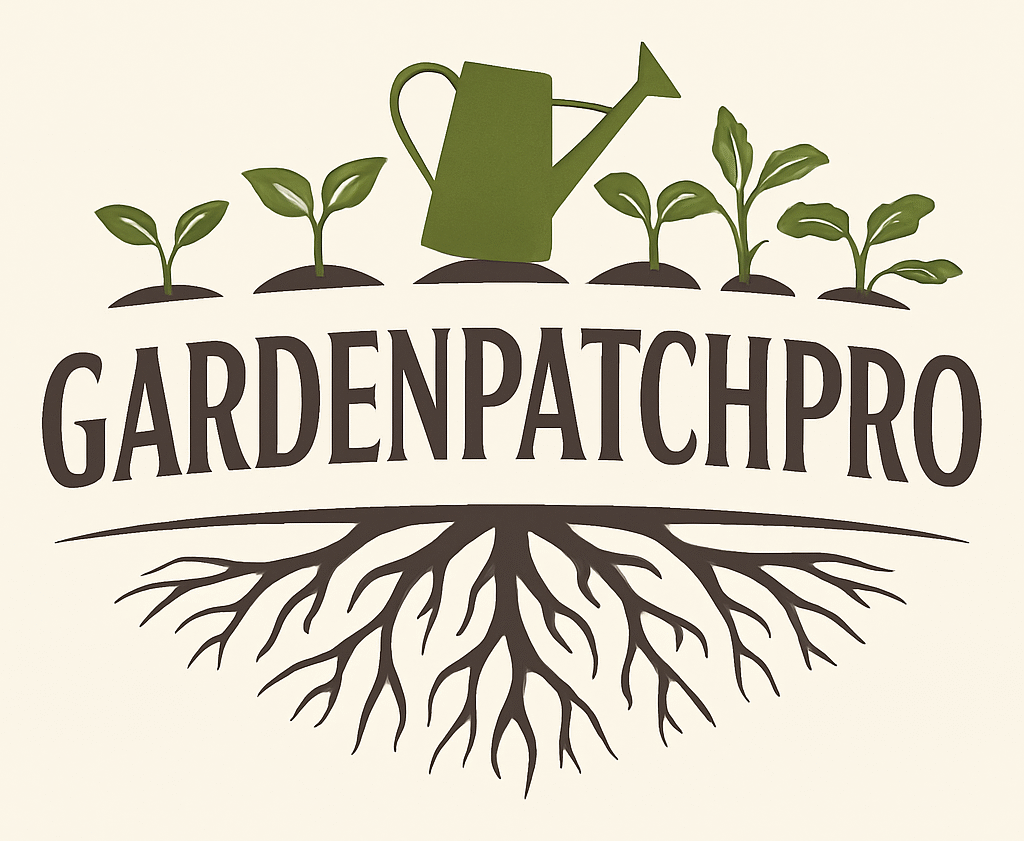Chaos Gardening: A Complete Guide to Wild, Low-Maintenance Gardens
Chaos gardening is a simple and relaxed way to grow plants by mixing different seeds together without following traditional rules about spacing or planting order. It lets gardeners use leftover seeds and enjoy an unpredictable mix of flowers, vegetables, and herbs growing freely in one space. This approach is ideal for those who want a low-maintenance garden and are open to surprises.

Instead of carefully planning where each seed goes, chaos gardening encourages scattering seeds at random and letting nature take its course. Gardeners can choose to be hands-off or provide some care, but the key is embracing variety and uncertainty. This method also helps reduce waste by clearing out old seed collections.
People interested in a fresh gardening experience will find chaos gardening offers fun, learning, and a chance to create a lively, natural garden area. It’s a good option for anyone with extra seeds and a patch of sunlight ready for something new and different. More details on how to start a chaos garden and what to expect are available in this guide to chaos gardening.
Key Takeways
- Chaos gardening uses mixed seeds planted without strict rules for a varied garden.
- It requires little planning and welcomes surprises in plant growth.
- Gardeners can choose how much care to give, making it flexible and approachable.
What Is Chaos Gardening?

Chaos gardening is a relaxed way to grow plants with little planning or control. It mixes different types of seeds and plants and allows them to grow freely, often creating a natural and unpredictable garden.
Definition and Origins
Chaos gardening means scattering a mix of seeds—flowers, vegetables, herbs—without strict patterns or design. It lets nature decide what grows and where. This method started as a response to highly structured, manicured gardens. It aims to reduce effort and encourage a wild, natural look.
The style comes from ideas about letting plants coexist naturally. Instead of neat rows or carefully planned beds, gardeners throw seeds loosely and enjoy watching what happens. It is low-stress but still requires some basic care like watering and occasional weeding. The approach appeals to those who want beauty without rigid gardening rules. More on this can be found at goodhousekeeping.com.
Comparing Chaos Gardening to Traditional Methods
Traditional gardening focuses on order and precise planning. Gardeners often measure spaces, choose specific plants, and arrange them in neat rows or sections. Chaos gardening works the opposite way. There are no fixed layouts, no plant groupings by type or color.
This method aims for spontaneity, mixing different plants randomly. It creates a diverse ecosystem where plants support each other naturally. While traditional gardens often need heavy maintenance, chaos gardening is designed to be easier on the gardener. However, “easy” does not mean no work; gardeners still check on their plants and remove weeds when needed.
Common Misconceptions
People often think chaos gardening means no effort or care. That is false. Chaos gardening still needs watering, basic weeding, and some observation to succeed. Without any care, the garden can become overrun with unwanted weeds.
Another misconception is that chaos gardening results in a messy or ugly garden. While it might look less perfect than formal gardens, many find the natural, wild look beautiful and vibrant. The style encourages variety and can attract pollinators like bees and butterflies, which benefit the environment. For more insights on these points, see thepioneerwoman.com and marthastewart.com.
Core Principles of the Chaos Gardening Approach

Chaos gardening focuses on allowing plants to grow naturally with minimal interference. It encourages gardeners to drop strict rules about design and management. This method values surprise, learning, and flexibility over control and precision.
Embracing Natural Plant Growth
In chaos gardening, plants grow wherever their seeds fall, without strict spacing or rows. This mimics how plants grow in the wild, allowing nature to decide which species thrive and where. Gardeners avoid forcing order or structure, instead letting sunlight, water, and soil conditions guide growth.
This approach accepts that some plants may outcompete others or spread unevenly. It relies on natural selection to balance the garden ecosystem. By working with nature’s processes, chaos gardening reduces the need for constant weeding, pruning, and reshaping.
Letting Go of Garden Perfectionism
Chaos gardening rejects the idea that a garden should look perfect or tidy. It encourages gardeners to stop worrying about uniformity or neatness. Instead, it offers freedom to experiment and embrace unexpected results, letting the garden evolve on its own.
This means accepting weeds as part of the environment and celebrating uneven plant patterns. Gardeners don’t prune or remove plants just for appearance but focus on what grows well naturally. This reduces stress and time spent on maintenance compared to traditional garden designs.
Encouraging Experimentation
Chaos gardening turns the garden into a living experiment. Gardeners mix seed varieties from different years and plant them randomly. Because many seeds are older or leftover, results are unpredictable, fostering curiosity and learning about what thrives in a given spot.
This trial-and-error method helps discover surprising plant combinations and resilience. It makes gardening accessible to beginners and enjoyable for experienced growers who want less rigid control. Gardeners decide how much care to provide, from hands-off observing to light watering and weeding.
Learn more about the chaos gardening approach.
Benefits of Chaos Gardening

Chaos gardening offers a practical and eco-friendly way to create a thriving garden with less work. Its natural approach helps improve the environment and encourages a lively mix of plants and wildlife. This style supports healthy soil, attracts pollinators, and gives gardeners more freedom to experiment.
Low Maintenance and Reduced Effort
Chaos gardening requires much less care compared to traditional gardening. Plants are allowed to grow where they want, so there is no need for detailed planting or constant weeding. The dense, mixed planting creates a natural mulch that helps keep weeds down and reduces watering needs.
Since the garden is designed to work with nature, plants often support each other, lowering pest problems. This means less time spent on maintenance and fewer tools or chemicals are needed. It is an ideal approach for those with limited time or beginners who want simpler garden care.
Boosting Biodiversity
One key benefit of chaos gardening is its positive impact on biodiversity. By planting a diverse mix of flowers, herbs, and vegetables randomly, it creates a rich habitat for insects, birds, and other wildlife. Pollinators like bees and butterflies thrive because of the variety of nectar and pollen sources.
This kind of garden design encourages a balanced ecosystem where different species coexist and support each other. It also helps protect native plants and promotes the growth of beneficial companion plants. Overall, chaos gardening contributes to stronger local ecosystems that benefit both the garden and the wider environment.
Learning From Nature
Chaos gardening is inspired by natural plant communities and encourages gardeners to observe how plants grow on their own. Instead of forcing rigid layouts, it allows plants to adapt to the soil, light, and climate conditions.
Gardeners learn to recognize which plants thrive in their specific location over time. This process supports better soil health by mixing deep and shallow-rooted plants, which improve nutrient cycling. Gardeners also see how plants compete and cooperate, which gives insight into natural garden dynamics without heavy intervention.
Creative Expression
Chaos gardening offers freedom for gardeners to experiment without strict rules. By scattering seeds or planting mixed seedlings, they can enjoy surprises as new plants emerge naturally.
This approach allows for the creation of unique gardens full of unexpected colors and shapes. It encourages mixing traditional flowers with wild plants and edible greens, resulting in an ever-changing, dynamic space. Gardeners can express creativity while supporting the environment, turning their garden into a living art piece that changes with the seasons.
For more details on this gardening style, see how chaos gardening combines ease and biodiversity at lisasnotebook.com.
Choosing and Mixing Seeds for a Chaos Garden

A successful chaos garden depends on picking seeds that can thrive together without strict planning. The selection should balance tough, adaptable plants with a mix of edibles and flowers. Careful thought about natives and potential invasives helps maintain the garden’s health and diversity.
Selecting Compatible Seed Mixes
Chaos gardening works best with seeds that tolerate competition and variable conditions. Seed mixes like wildflower mixes often contain resilient types such as zinnias, cosmos, marigolds, and borage. These plants grow quickly, handle crowding, and attract pollinators.
It helps to choose seeds that vary in height and growth rate. For example, sunflowers add vertical structure while low-growing plants like clover provide ground cover.
Seeds should complement each other’s water and sunlight needs. Lettuce and radish can fill early-season gaps, while more aggressive plants take over later. Mixing hardy annuals with perennials can also create ongoing interest.
Incorporating Edibles and Ornamentals
Including both edible and ornamental plants makes a chaos garden more practical and visually appealing. Vegetables like radish and lettuce are fast-growing, filling space and feeding the gardener.
Bean varieties, especially bush beans, fix nitrogen and enhance soil health. Nasturtiums add bright flowers and serve as pest decoys while their leaves and flowers are edible.
Ornamentals like marigolds and zinnias repel pests and attract beneficial insects. Borage helps improve soil and brings a distinct texture. Combining these with edibles encourages a balanced ecosystem and reduces the need for maintenance.
Using Native Plants and Species
Native species adapt well to local climate and soil, making them strong players in a chaos garden. They typically support local wildlife and require less care.
Plants like native wildflowers bring biodiversity and are less likely to suffer from pests or diseases. Adding native clover improves soil through nitrogen fixation and helps cover bare soil.
Using natives helps create a sustainable garden that fits naturally into the environment. It reduces dependency on watered or fertilized plants and promotes healthy soil and insect populations.
Avoiding Invasive Species
Chaos gardens tempt gardeners to toss many seeds, but caution is needed to avoid invasive plants. Invasive species spread aggressively and can choke out other plants, disrupting balance.
Before adding new seeds, research if a plant is invasive in the area. Common offenders include certain fast-spreading vines or overly aggressive herbs.
It’s best to exclude these and use well-known, non-invasive plants for reliable growth. This approach maintains the garden’s diversity and prevents unwanted domination by a few species.
Essential Steps to Starting a Chaos Garden

Starting a chaos garden involves choosing the right spot, preparing the soil properly, knowing how to sow seeds without strict patterns, and using the right watering approach to help seedlings grow. These steps create the foundation for a garden where plants can thrive naturally with little effort.
Site Selection and Soil Preparation
Choosing a site with at least six hours of sunlight is important because most plants need sunlight to grow well. Partial shade can work but may result in fewer blooms. The location should have good drainage to avoid waterlogged soil, which can harm seeds.
Soil type matters. If the soil is compacted or dry, it should be loosened using a fork or rake. Adding a thin layer of compost can improve soil fertility and moisture retention. This step is optional but helps seeds establish better. Chaos gardening allows flexibility, so some gardeners skip soil amendments to see what grows naturally, while others prepare the soil for a better chance at success.
Best Practices for Sowing Seeds
Seeds are mixed together to create a diverse planting. Larger seeds should be sown first since they need more soil coverage. Smaller seeds can be sprinkled on top without much covering. The goal is an even spread, so mixing seeds in a bowl or shaker helps avoid clumps.
Older seeds can be used regardless of expiration dates, but soaking tough seeds beforehand can improve germination. It is important not to follow strict rows or distances between seeds—letting them fall randomly is part of the process. This encourages natural competition and resilience among plants.
Initial Watering Techniques
After sowing, watering is essential to start germination. The soil must be evenly moist but not soaked. Watering can be done gently with a spray or watering can to avoid displacing seeds.
Once seedlings begin to sprout, watering can be reduced. Rainfall may be enough in wetter climates, but in dry areas, maintaining moisture for the first few weeks is crucial. Overwatering should be avoided, as soggy soil can kill young plants and cause root problems. Monitoring soil moisture helps balance watering needs without extra work.
For more detailed guidance on chaos garden basics, visit this page on how to start a chaos garden.
Optimizing for Sustainability and Wildlife

A well-planned chaos garden supports local wildlife by offering food, shelter, and diverse plant life. Choosing the right plants and techniques helps maintain balance with minimal effort while enhancing the garden’s natural beauty and ecological health.
Supporting Pollinators and Beneficial Insects
Pollinators like bees, butterflies, and hummingbirds are vital for plant reproduction. Including native wildflowers and plants rich in nectar provides continuous food sources throughout the seasons. Plants such as borage and clover are excellent choices because they bloom over long periods and attract many pollinators.
Beneficial insects like ladybugs help control pests naturally. Leaving leaf litter and untrimmed areas creates habitats for these helpful creatures. The garden should avoid chemical pesticides to keep this ecosystem intact. A diverse plant mix encourages more insect variety, which strengthens the garden’s overall resilience and productivity.
Integrating Companion Planting
Companion planting uses certain plants together to improve growth and repel pests. Marigolds are effective in deterring aphids and nematodes, while nasturtiums can confuse harmful insects and attract beneficial ones. Mixing these plants among wildflowers helps maintain a natural pest balance without harsh chemicals.
This strategy supports chaos gardening’s free-form style by encouraging plants to grow near each other naturally. Planting herbs like basil near flowers also improves pest control. Companion planting adds layers of protection, improves soil health, and increases plant diversity in the garden.
Encouraging Drought-Tolerant Plants
Drought-tolerant plants reduce water needs, making chaos gardens more sustainable, especially in dry climates. Native species adapted to local rainfall patterns thrive without frequent watering. Examples include hardy perennials and certain wildflowers that store water in their leaves or roots.
Establishing these plants helps the garden survive dry spells with minimal care. Deep watering occasionally supports strong root systems that resist drought stress. This approach lowers water use and supports wildlife by providing reliable habitats even during dry seasons. Choosing drought-resistant plants fits well with the wild, low-maintenance nature of chaos gardening.
For more details, see chaos gardening’s benefits for pollinators and wildlife at gracefulgardens.com.
Maintenance, Challenges, and Troubleshooting

Chaos gardening requires regular attention despite its low-maintenance nature. Gardeners must manage plants that grow too aggressively, support healthy growth through the seasons, and handle unexpected outcomes.
Managing Unwanted Plants and Weeds
Weeds and fast-spreading plants can quickly crowd a chaos garden. It’s important to identify invasive species early. Gardeners should remove weeds by hand or use light hoeing to keep them under control. Mulching can also help reduce weed growth.
Because chaos gardens have dense plantings, some species may overpower others. Regular thinning or relocating plants ensures weaker plants get enough light and nutrients. Gardeners should watch for seedlings that resemble weeds and decide if they contribute to the garden’s balance.
Using low-maintenance shrubs as anchors helps create visual order while reducing weed space. These shrubs require little pruning and help prevent aggressive species from taking over.
Sustaining Growth Through the Growing Season
Watering is essential but should be balanced. Chaos gardens thrive on natural rain when possible; supplemental watering is necessary during dry spells. Overwatering can encourage disease and weak roots, so watering deeply but less often is better.
Early soil preparation by loosening top layers helps seeds settle and grow. Adding organic mulch retains moisture and improves soil health throughout the growing season.
Plants may compete for nutrients and sunlight. Gardeners should monitor growth and adjust plant placement if some are shaded out or struggling. Occasional light thinning supports overall garden health without disrupting the natural look.
Dealing With Surprises and Failures
Chaos gardening embraces unpredictability, but not everything will thrive. Some plants may fail due to poor soil, shade, or competition. Gardeners should observe which species perform well and adjust future seed mixes accordingly.
Unexpected seedlings can be a welcome surprise or an unwanted challenge. Gardeners can choose to keep interesting volunteers or remove those that hinder others. Relocating plants is an option when some spots don’t support healthy growth.
Patience is key. It may take a few growing seasons to find the right balance between wild growth and manageable space. With gentle adjustments, a vibrant, diverse garden emerges over time.
For more tips on chaos gardening challenges and care, see Everyone Is Talking About Chaos Gardening — Here’s How to Do It.
Frequently Asked Questions

Chaos gardening uses a loose approach, scattering seeds without strict plans. It relies on choosing plants that suit the environment, timing, and proper seed combinations.
What is the method behind chaos gardening?
Chaos gardening means mixing seeds and scattering them over soil without rows or formal layouts. It lets plants grow freely, relying on nature to fill in the space.
The method avoids careful design or rigid planning. Instead, it embraces experimentation and low maintenance.
How does chaos gardening compare to traditional gardening techniques?
Traditional gardening often involves precise plant placement, spacing, and ongoing care. Chaos gardening skips this by letting plants grow randomly.
It focuses less on neatness and more on natural growth. This method saves time but can be unpredictable.
Which plants thrive best in a chaos garden setting?
Plants that do well in local climate and soil usually succeed. Native species and hardy plants fit best.
Fast-growing vegetables like radishes and lettuces, and flowers such as cosmos and zinniums, often work well. Avoid plants that need constant care, like tomatoes or cucumbers.
Can chaos gardening improve biodiversity?
Yes, it can encourage a variety of plants and attract pollinators. Using native flowers and soil-building plants supports local ecosystems.
A mix of species helps create habitats, but success depends on plant choice and environment.
What are the typical results to expect from chaos gardening?
Results vary and are often unpredictable. Some seasons may bring colorful blooms, while others may seem sparse.
It’s a form of experimenting rather than guaranteed success. The garden’s look can change each year.
How to choose the best seeds for a chaos garden?
Select seeds that thrive in the same conditions, like sun or shade, and those with similar germination needs.
Use reputable seed mixes or carefully blend your own. Avoid mixing aggressive plants with delicate ones to reduce crowding.
For more detailed advice, see tips on starting a chaos garden.
